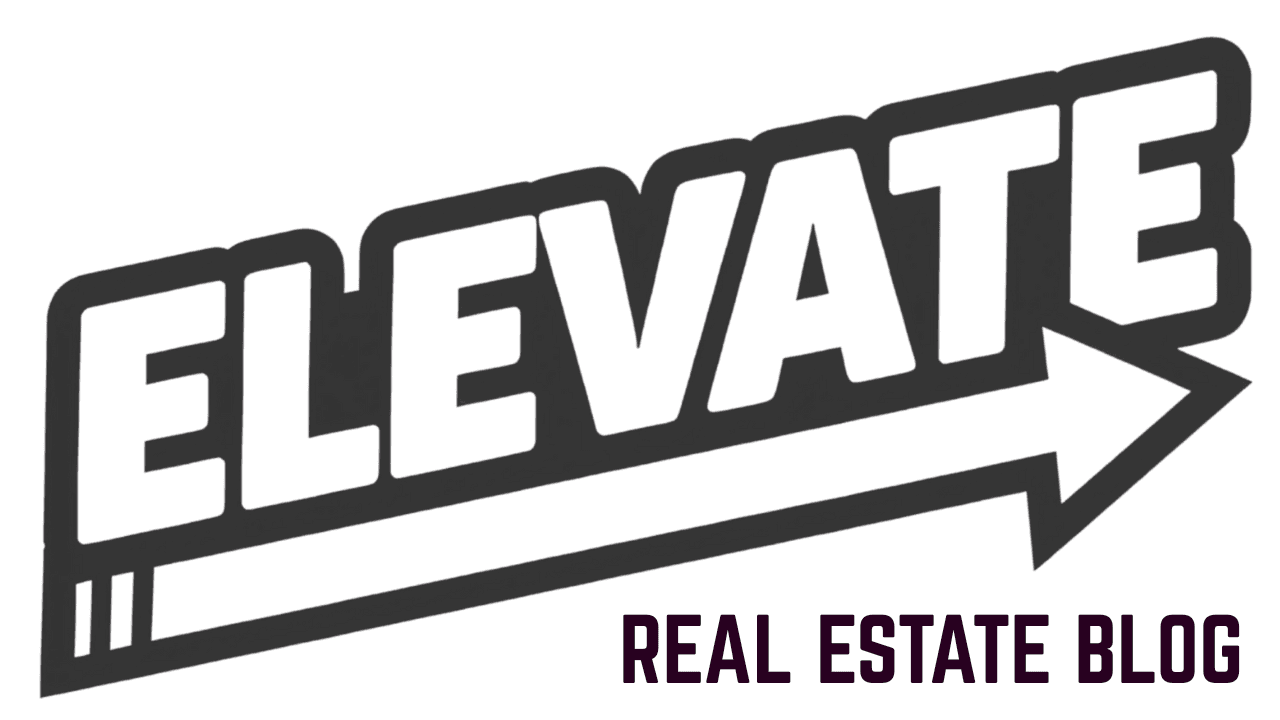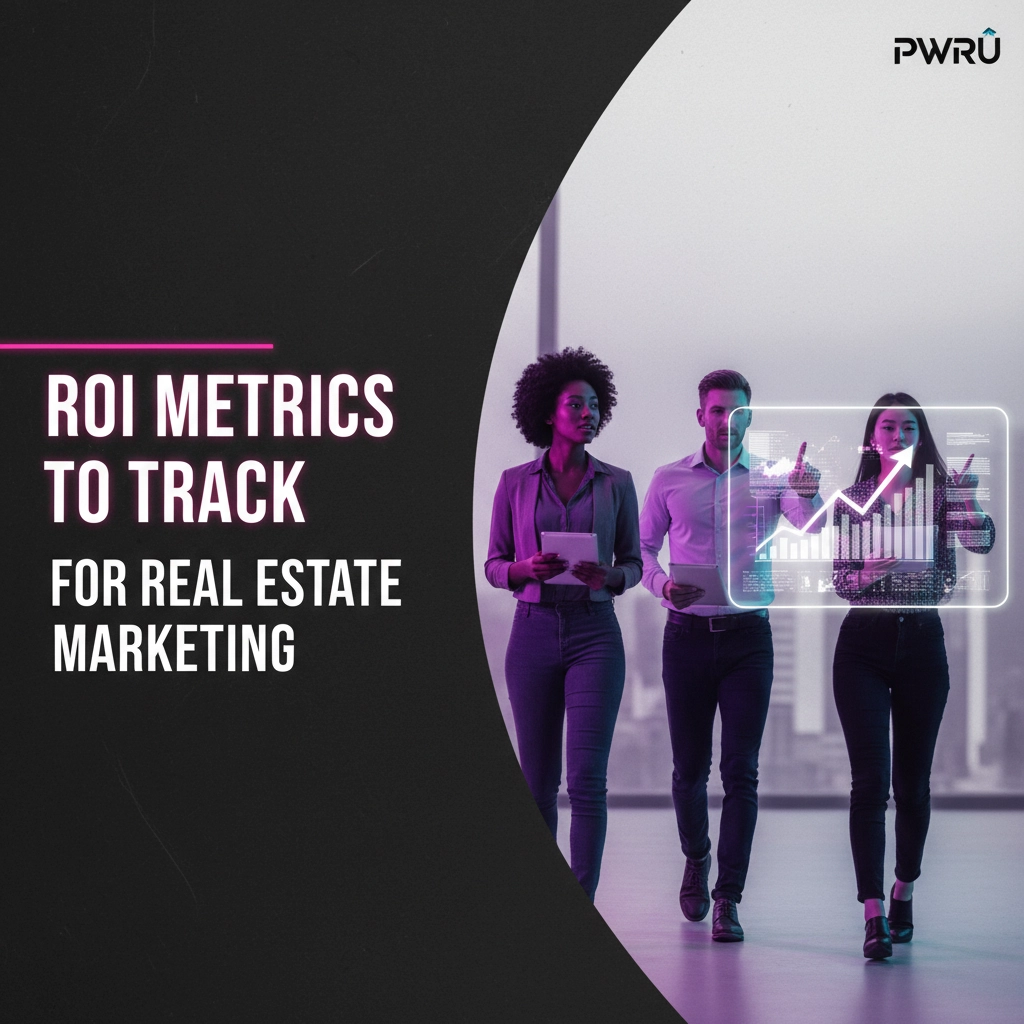Real estate marketing ROI measurement separates successful agents from those burning money on ineffective campaigns. 73% of real estate professionals cannot justify their marketing investments because they track the wrong metrics or skip measurement entirely.
Proper ROI tracking reveals which marketing channels generate actual revenue, not just vanity metrics like website visits or social media likes. This data-driven approach allows agents to double down on profitable strategies while eliminating wasteful spending.
The ROI Calculation Foundation
Marketing ROI uses a simple formula:
ROI = (Revenue Generated – Marketing Costs) / Marketing Costs × 100
If you spend $1,000 on marketing and close deals worth $6,000 in commission, your ROI is 500%. Industry benchmarks suggest aiming for a 5:1 ratio, earning five dollars for every marketing dollar spent.
Track this calculation monthly across all marketing channels. Quarterly reviews provide better trend analysis, but monthly tracking catches underperforming campaigns before significant budget waste occurs.
Lead Generation Metrics
Total Leads by Source
Count leads generated from each marketing channel separately. Website forms, phone calls, email responses, and social media inquiries all count as leads. Tag each lead with its source immediately upon capture.
Cost Per Lead (CPL)
Divide total marketing spend by leads generated. If Google Ads costs $500 and produces 10 leads, CPL equals $50. Compare CPL across channels to identify the most efficient lead sources.
Quality matters more than quantity. A $100 lead that closes generates better ROI than five $20 leads that never convert.
Lead Quality Score
Assign quality ratings based on lead behavior and demographics. High-quality leads match your ideal client profile, respond quickly to contact attempts, and show genuine buying or selling intent.
Track what percentage of leads from each source qualify as high-quality. This metric prevents chasing cheap but worthless leads.

Conversion Rate Metrics
Visitor-to-Lead Conversion Rate
Calculate the percentage of website visitors who submit contact information. The real estate industry benchmark is 2.2%, though top performers like Zillow exceed 5%.
Monitor this metric monthly. Declining conversion rates signal website problems, unclear value propositions, or poor user experience.
Appointment Conversion Rate
Track how many leads schedule face-to-face or phone consultations. If 10 leads generate 3 appointments, your appointment conversion rate is 30%.
This metric reveals the effectiveness of your initial follow-up process and lead qualification system.
Closing Conversion Rate
Measure what percentage of appointments result in signed contracts. If 3 appointments yield 1 closed deal, your closing conversion rate is 33%.
Low closing rates indicate poor lead quality, inadequate needs assessment, or weak presentation skills.
Channel-Specific Performance Analysis
Different marketing channels deliver vastly different returns. 2025 industry data shows:
- SEO: 1,389% average ROI
- Webinars: 430% average ROI
- Social Media: 182% average ROI
- Pay-Per-Click Ads: 36% average ROI
Track each channel's performance separately using UTM parameters and dedicated phone numbers. This granular tracking identifies your most profitable marketing investments.
Social Media ROI
Social media marketing requires specific metrics beyond general engagement. Track:
- Direct leads from social platforms
- Cost per social media lead
- Social media lead-to-closing rate
- Referrals generated through social connections
Email Marketing Performance
Email campaigns generate measurable results when tracked properly:
- Open rates (industry average: 22%)
- Click-through rates (industry average: 2.3%)
- Email-to-lead conversion rate
- Email lead closing rate
Content Marketing ROI
Blog posts, videos, and educational content require long-term ROI measurement:
- Organic traffic growth
- Content-generated leads
- Time from content consumption to lead conversion
- Average deal size from content-sourced clients
Revenue and Business Growth Metrics
Revenue Per Marketing Dollar
Calculate total commission revenue divided by total marketing spend. This metric shows overall marketing effectiveness across all channels and campaigns.
Agents using systematic CRM tracking achieve 28% higher annual revenue growth compared to manual tracking methods.
Client Lifetime Value (CLV)
Measure the total revenue each client generates over time, including:
- Initial transaction commission
- Repeat business value
- Referral-generated revenue
- Average years between transactions
CLV helps justify higher customer acquisition costs for quality clients who generate long-term value.
Market Share Growth
Track your percentage of local market transactions over time. Effective marketing should increase market share, not just maintain current levels.

Advanced Performance Indicators
Attribution Modeling
Many clients interact with multiple marketing touchpoints before converting. Attribution modeling assigns conversion credit across the entire customer journey.
First-touch attribution credits the initial marketing contact. Last-touch attribution credits the final interaction before conversion. Multi-touch attribution distributes credit across all interactions.
Brand Awareness Metrics
While harder to measure, brand awareness impacts long-term ROI:
- Direct website traffic growth
- Branded search volume increases
- Unsolicited referrals and mentions
- Recognition in local market surveys
Competitive Analysis
Monitor competitor marketing activities and results:
- Competitor ad spending and positioning
- Market share changes
- New competitor marketing channels
- Client feedback about competitor offerings
Implementation and Tracking Systems
Technology Stack Requirements
Effective ROI tracking requires integrated systems:
- CRM with lead source tracking
- Website analytics (Google Analytics 4)
- Call tracking numbers
- Email marketing platform analytics
- Social media management tools
Modern platforms like Pulse Intelligence integrate these data sources, providing comprehensive ROI dashboards without manual data compilation.
Monthly Reporting Process
Establish consistent monthly reporting:
- Compile lead generation numbers by source
- Calculate conversion rates at each funnel stage
- Measure cost per lead and cost per closing
- Analyze revenue generated by marketing channel
- Compare results to previous periods and benchmarks
Data Quality Management
Accurate ROI measurement requires clean data:
- Tag all leads with source information immediately
- Use consistent naming conventions across platforms
- Regular data audits to identify and fix tracking gaps
- Staff training on proper lead source attribution
Optimization Based on ROI Data
Budget Reallocation
ROI data should drive budget decisions. Shift money from underperforming channels to high-ROI activities. If SEO generates 1,389% ROI while PPC delivers 36%, allocate more resources to content and optimization.
Campaign Refinement
Use ROI metrics to optimize existing campaigns:
- A/B test ad copy, images, and targeting
- Refine landing pages to improve conversion rates
- Adjust follow-up sequences based on conversion data
- Modify content strategy based on lead generation results
Long-term Strategic Planning
ROI trends inform strategic business decisions:
- Market expansion based on successful channel performance
- Service offering adjustments based on client acquisition costs
- Technology investments justified by efficiency gains
- Team training priorities based on conversion bottlenecks
Tracking real estate marketing ROI requires systematic measurement across multiple metrics and channels. Successful agents focus on revenue-generating activities while eliminating wasteful spending through data-driven decision making.
Ready to implement comprehensive ROI tracking for your real estate marketing? Pulse Intelligence provides integrated analytics and performance tracking designed specifically for real estate professionals, turning complex data into actionable insights for better marketing decisions.





